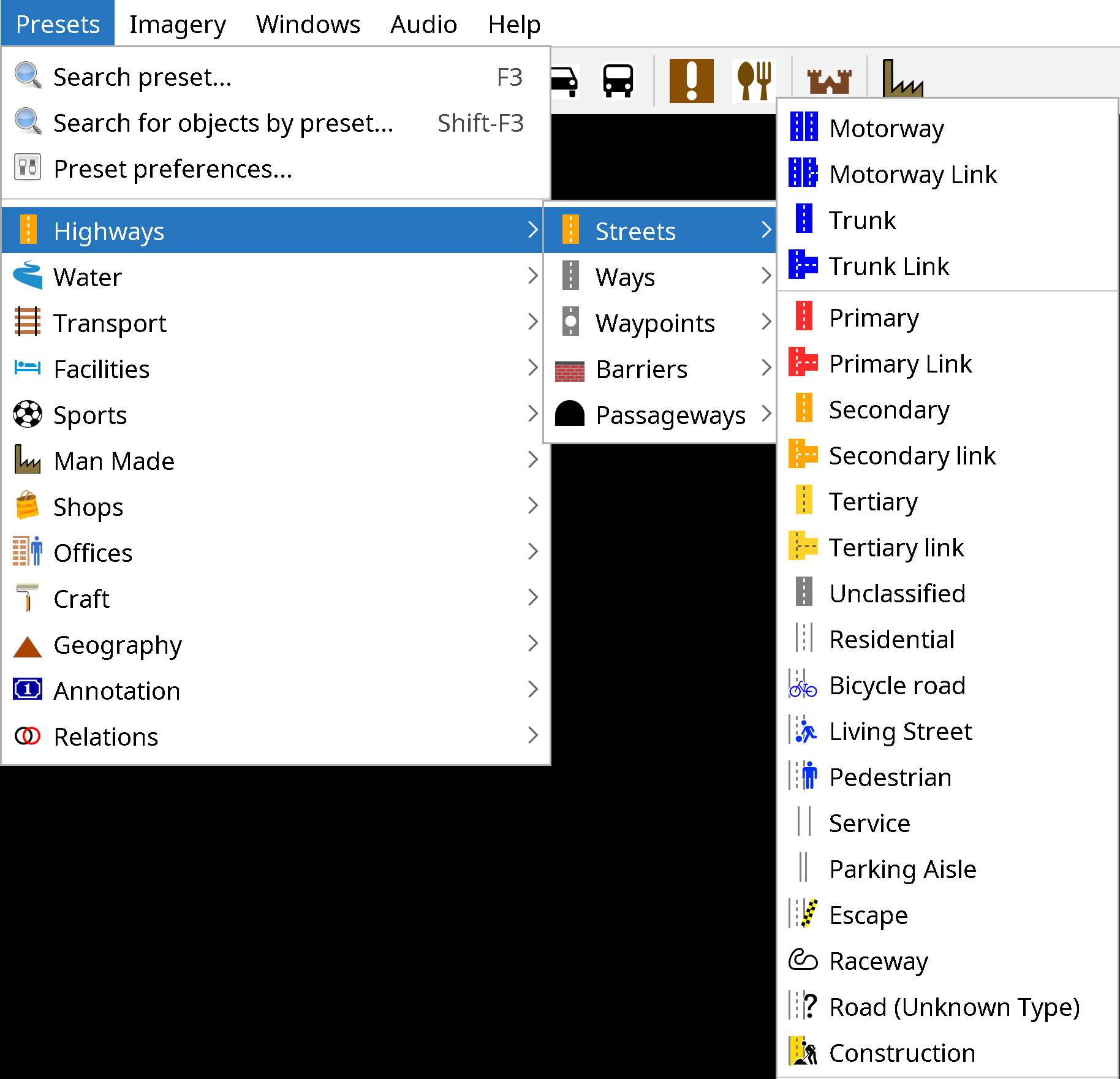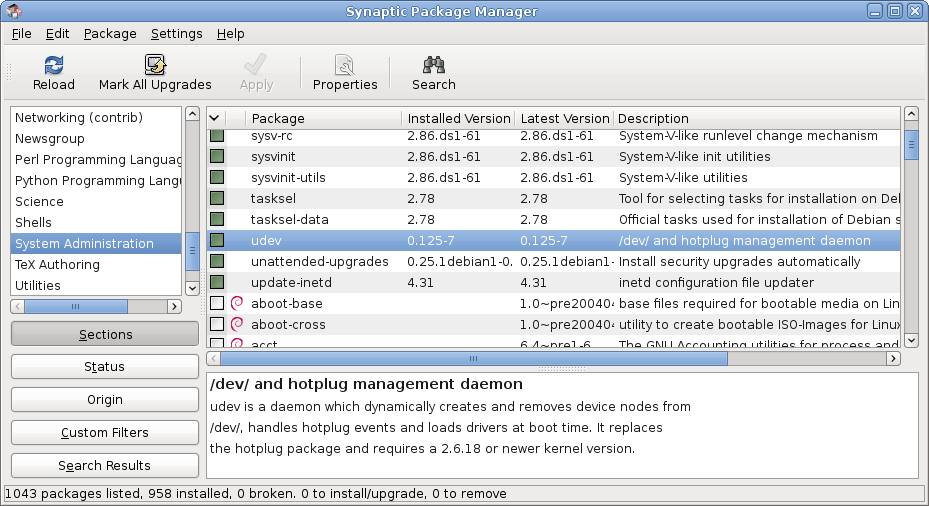|
JOSM
JOSM () ''(Java OpenStreetMap editor)'' is a free software desktop editing tool for OpenStreetMap geodata created in Java, originally developed by Immanuel Scholz and currently maintained by Dirk Stöcker. The editing tool contains advanced features that are not present in OSM's default online editor, iD. Features Some notable features of JOSM are importing GPX files (GPS tracks), working with aerial imagery (including WMS, TMS and WMTS protocols), support for multiple cartographic projections, layers, relations editing, data validation tools, data filtering, offline work, presets and rendering styles. JOSM provides more than 200 keyboard shortcuts for the core functions. Many additional features (like tools for drawing buildings, adding Wikipedia links or viewing data in 3D) are available through the plugins. There are more than 100 of them in the repository. History * The first changeset was created on 27 September 2005. * The first beta version (which required Java 5) ... [...More Info...] [...Related Items...] OR: [Wikipedia] [Google] [Baidu] |
JOSM 17013 Screenshot Presets En
JOSM () ''(Java OpenStreetMap editor)'' is a free software desktop editing tool for OpenStreetMap geodata created in Java, originally developed by Immanuel Scholz and currently maintained by Dirk Stöcker. The editing tool contains advanced features that are not present in OSM's default online editor, iD. Features Some notable features of JOSM are importing GPX files (GPS tracks), working with aerial imagery (including WMS, TMS and WMTS protocols), support for multiple cartographic projections, layers, relations editing, data validation tools, data filtering, offline work, presets and rendering styles. JOSM provides more than 200 keyboard shortcuts for the core functions. Many additional features (like tools for drawing buildings, adding Wikipedia links or viewing data in 3D) are available through the plugins. There are more than 100 of them in the repository. History * The first changeset was created on 27 September 2005. * The first beta version (which required Ja ... [...More Info...] [...Related Items...] OR: [Wikipedia] [Google] [Baidu] |
OpenStreetMap
OpenStreetMap (OSM) is a free, open geographic database updated and maintained by a community of volunteers via open collaboration. Contributors collect data from surveys, trace from aerial imagery and also import from other freely licensed geodata sources. OpenStreetMap is freely licensed under the Open Database License and as a result commonly used to make electronic maps, inform turn-by-turn navigation, assist in humanitarian aid and data visualisation. OpenStreetMap uses its own topology to store geographical features which can then be exported into other GIS file formats. The OpenStreetMap website itself is an online map, geodata search engine and editor. In 2004, OpenStreetMap was created by Steve Coast in response to the Ordnance Survey, the United Kingdom's national mapping agency, failing to release its data to the public and under free licences. Initially, maps were created only via GPS traces, but it was quickly populated by importing public domain geogr ... [...More Info...] [...Related Items...] OR: [Wikipedia] [Google] [Baidu] |
Web Map Service
A Web Map Service (WMS) is a standard protocol developed by the Open Geospatial Consortium in 1999 for serving georeferenced map images over the Internet. These images are typically produced by a map server from data provided by a GIS database. History The Open Geospatial Consortium (OGC) became involved in developing standards for web mapping after a paper was published in 1997 by Allan Doyle, outlining a "WWW Mapping Framework". The OGC established a task force to come up with a strategy, and organized the "Web Mapping Testbed" initiative, inviting pilot web mapping projects that built upon ideas by Doyle and the OGC task force. Results of the pilot projects were demonstrated in September 1999, and a second phase of pilot projects ended in April 2000. The Open Geospatial Consortium released WMS version 1.0.0 in April 2000, followed by version 1.1.0 in June 2001, and version 1.1.1 in January 2002. The OGC released WMS version 1.3.0 in January 2004. Requests WMS specifies a ... [...More Info...] [...Related Items...] OR: [Wikipedia] [Google] [Baidu] |
Topologically Integrated Geographic Encoding And Referencing
Topologically Integrated Geographic Encoding and Referencing, or TIGER, or TIGER/Line is a format used by the United States Census Bureau to describe land attributes such as roads, buildings, rivers, and lakes, as well as areas such as census tracts. TIGER was developed to support and improve the Bureau's process of taking the Decennial Census. The TIGER files do not contain the census demographic data, but merely the geospatial/map data. GIS can be used to merge census demographics or other data sources with the TIGER files to create maps and conduct analysis. TIGER data is available without cost because U.S. Government publications are required to be released into the public domain. Coverage The TIGER/Line shapefile data includes complete coverage of the contiguous United States, Alaska, Hawaii, Puerto Rico, the U.S. Virgin Islands, American Samoa, Guam, the Commonwealth of the Northern Mariana Islands, and the Midway Islands. TIGER includes both land features such as roa ... [...More Info...] [...Related Items...] OR: [Wikipedia] [Google] [Baidu] |
Windows
Windows is a group of several proprietary graphical operating system families developed and marketed by Microsoft. Each family caters to a certain sector of the computing industry. For example, Windows NT for consumers, Windows Server for servers, and Windows IoT for embedded systems. Defunct Windows families include Windows 9x, Windows Mobile, and Windows Phone. The first version of Windows was released on November 20, 1985, as a graphical operating system shell for MS-DOS in response to the growing interest in graphical user interfaces (GUIs). Windows is the most popular desktop operating system in the world, with 75% market share , according to StatCounter. However, Windows is not the most used operating system when including both mobile and desktop OSes, due to Android's massive growth. , the most recent version of Windows is Windows 11 for consumer PCs and tablets, Windows 11 Enterprise for corporations, and Windows Server 2022 for servers. Genealogy By ... [...More Info...] [...Related Items...] OR: [Wikipedia] [Google] [Baidu] |
JavaFX
JavaFX is a software platform for creating and delivering desktop applications, as well as rich web applications that can run across a wide variety of devices. JavaFX has support for desktop computers and web browsers on Microsoft Windows, Linux, and macOS, as well as mobile devices running iOS and Android. On desktops, JavaFX supports Windows Vista, Windows 7, Windows 8, Windows 10, macOS and Linux operating systems. Beginning with JavaFX 1.2, Oracle has released beta versions for OpenSolaris. On mobile, JavaFX Mobile 1.x is capable of running on multiple mobile operating systems, including Symbian OS, Windows Mobile, and proprietary real-time operating systems. JavaFX was intended to replace Swing as the standard GUI library for Java SE, but it has been dropped from new Standard Editions while Swing and AWT remain included, supposedly because JavaFX's marketshare has been "eroded by the rise of 'mobile first' and 'web f ... [...More Info...] [...Related Items...] OR: [Wikipedia] [Google] [Baidu] |
Debian
Debian (), also known as Debian GNU/Linux, is a Linux distribution composed of free and open-source software, developed by the community-supported Debian Project, which was established by Ian Murdock on August 16, 1993. The first version of Debian (0.01) was released on September 15, 1993, and its first stable version (1.1) was released on June 17, 1996. The Debian Stable branch is the most popular edition for personal computers and servers. Debian is also the basis for many other distributions, most notably Ubuntu. Debian is one of the oldest operating systems based on the Linux kernel. The project is coordinated over the Internet by a team of volunteers guided by the Debian Project Leader and three foundational documents: the Debian Social Contract, the Debian Constitution, and the Debian Free Software Guidelines. New distributions are updated continually, and the next candidate is released after a time-based freeze. Since its founding, Debian has been developed op ... [...More Info...] [...Related Items...] OR: [Wikipedia] [Google] [Baidu] |
Java (programming Language)
Java is a high-level, class-based, object-oriented programming language that is designed to have as few implementation dependencies as possible. It is a general-purpose programming language intended to let programmers ''write once, run anywhere'' ( WORA), meaning that compiled Java code can run on all platforms that support Java without the need to recompile. Java applications are typically compiled to bytecode that can run on any Java virtual machine (JVM) regardless of the underlying computer architecture. The syntax of Java is similar to C and C++, but has fewer low-level facilities than either of them. The Java runtime provides dynamic capabilities (such as reflection and runtime code modification) that are typically not available in traditional compiled languages. , Java was one of the most popular programming languages in use according to GitHub, particularly for client–server web applications, with a reported 9 million developers. Java was originally de ... [...More Info...] [...Related Items...] OR: [Wikipedia] [Google] [Baidu] |
Package Manager
A package manager or package-management system is a collection of software tools that automates the process of installing, upgrading, configuring, and removing computer programs for a computer in a consistent manner. A package manager deals with ''packages'', distributions of software and data in archive files. Packages contain metadata, such as the software's name, description of its purpose, version number, vendor, checksum (preferably a cryptographic hash function), and a list of dependencies necessary for the software to run properly. Upon installation, metadata is stored in a local package database. Package managers typically maintain a database of software dependencies and version information to prevent software mismatches and missing prerequisites. They work closely with software repositories, binary repository managers, and app stores. Package managers are designed to eliminate the need for manual installs and updates. This can be particularly useful for large ent ... [...More Info...] [...Related Items...] OR: [Wikipedia] [Google] [Baidu] |
Java
Java (; id, Jawa, ; jv, ꦗꦮ; su, ) is one of the Greater Sunda Islands in Indonesia. It is bordered by the Indian Ocean to the south and the Java Sea to the north. With a population of 151.6 million people, Java is the world's most populous island, home to approximately 56% of the Indonesian population. Indonesia's capital city, Jakarta, is on Java's northwestern coast. Many of the best known events in Indonesian history took place on Java. It was the centre of powerful Hindu-Buddhist empires, the Islamic sultanates, and the core of the colonial Dutch East Indies. Java was also the center of the Indonesian struggle for independence during the 1930s and 1940s. Java dominates Indonesia politically, economically and culturally. Four of Indonesia's eight UNESCO world heritage sites are located in Java: Ujung Kulon National Park, Borobudur Temple, Prambanan Temple, and Sangiran Early Man Site. Formed by volcanic eruptions due to geologic subduction of the Aust ... [...More Info...] [...Related Items...] OR: [Wikipedia] [Google] [Baidu] |
Ubuntu (operating System)
Ubuntu ( ) is a Linux distribution based on Debian and composed mostly of free and open-source software. Ubuntu is officially released in three editions: '' Desktop'', '' Server'', and ''Core'' for Internet of things devices and robots. All the editions can run on the computer alone, or in a virtual machine. Ubuntu is a popular operating system for cloud computing, with support for OpenStack. Ubuntu's default desktop changed back from the in-house Unity (user interface), Unity to GNOME after nearly 6.5 years in 2017 upon the release of version Ubuntu version history#1710, 17.10. Ubuntu is released every six months, with long-term support (LTS) releases every two years. , the most-recent release is Ubuntu version history#2210, 22.10 ("Kinetic Kudu"), and the current long-term support release is Ubuntu version history#2204, 22.04 ("Jammy Jellyfish"). Ubuntu is software development, developed by British company Canonical (company), Canonical, and a community of other developers ... [...More Info...] [...Related Items...] OR: [Wikipedia] [Google] [Baidu] |



